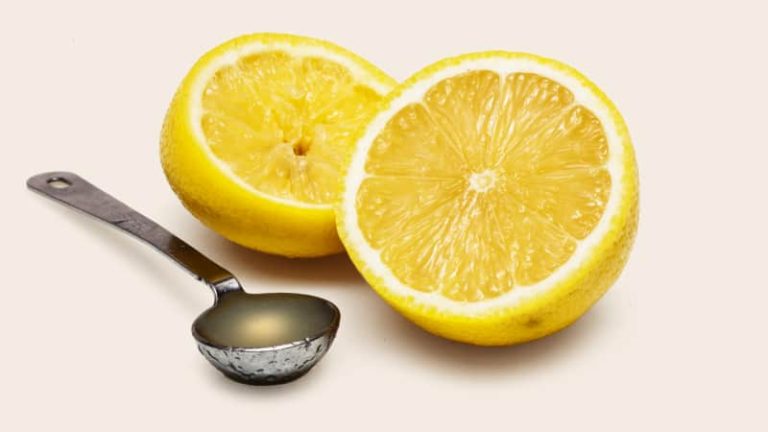Imagine squeezing a lemon, expecting a full burst of tangy goodness, only to be left with a few disappointing drops. Frustrating, right?
You’re not alone. Many people miss out on the full potential of their lemons simply because they don’t know the tricks to maximize their juicing efforts. But what if you could unlock every drop of zest and flavor hidden inside?
Picture the satisfaction of watching juice flow effortlessly, filling your glass with the perfect blend of freshness and zing. This isn’t just about squeezing harder; it’s about using smart techniques that make your lemons work for you. Dive into these tried-and-true methods and discover how you can get more juice from each lemon. Let’s transform your kitchen experience and elevate your dishes to new heights. Keep reading to become a lemon-squeezing pro!

Credit: www.reddit.com
Choosing The Right Lemons
Selecting ripe lemons ensures you get more juice. Choose lemons that are heavy and have smooth skin. Bright yellow color indicates freshness and juiciness.
Choosing the right lemons is crucial if you want to maximize juice extraction. Not all lemons are created equal, and understanding what to look for can make a significant difference in your juicing yield. Let’s dive into how to select the best lemons for your needs.Types Of Lemons
Did you know there are different types of lemons, each with its own characteristics? The most common varieties you’ll find are Eureka and Lisbon. Eureka lemons are slightly bumpy and have a thinner skin, making them easier to juice. Lisbon lemons, on the other hand, have a smoother skin and are generally seedless, which can be a convenient option. Meyer lemons are another popular choice, known for their sweeter taste and fragrant aroma. They’re excellent for both juicing and culinary uses. However, they may not yield as much juice as their more acidic counterparts. Next time you’re at the market, consider experimenting with different types to see which suits your taste and juicing needs best.Identifying Fresh Lemons
Picking fresh lemons can seem daunting, but it’s easier than you think. Look for lemons that are firm to the touch and have a bright, vibrant yellow color. Avoid any with brown spots or a dull appearance, as these are signs of aging. Weight is another indicator of a juicy lemon. Heavier lemons usually contain more juice. Try holding a few in your hands to compare. A subtle tip is to give them a gentle squeeze. If they have a little give without being squishy, you’re on the right track. Have you ever bought a lemon only to find it’s dry inside? It’s frustrating, but checking the skin can help prevent this. Smooth, thin-skinned lemons are typically juicier than those with thick, bumpy skin. Next time, use these tips to select a lemon that’s bursting with juice! Choosing the right lemons is a small step that can lead to big improvements in your juicing results. What type of lemon will you choose for your next glass of lemonade?
Credit: www.reddit.com
Prepping Lemons For Maximum Juice
Getting the most juice from lemons can be a challenge. But with a few simple techniques, you can maximize their yield. Proper preparation plays a crucial role in extracting every last drop. Let’s explore some effective methods to prepare your lemons for juicing.
Warming Lemons
Warming lemons helps to release more juice. Start by placing lemons in warm water. Soak them for about 10 minutes. This process softens the lemon’s rind. A softer rind makes it easier to squeeze. Alternatively, microwave the lemon for 20 seconds. Ensure you don’t overheat. Overheating can degrade the lemon’s taste.
Rolling Techniques
Rolling lemons before juicing increases juice yield. Place the lemon on a flat surface. Use your palm to apply gentle pressure. Roll it back and forth a few times. This breaks down the internal membranes. Broken membranes release more juice when squeezed. The rolling technique is simple yet effective.
Juicing Tools And Techniques
Lemons are a wonderful addition to any kitchen. They add flavor and health benefits. To maximize their juice, the right tools and techniques are essential. Understanding different juicing tools can enhance your juicing experience. Explore both manual and electric options to find what suits you best.
Manual Juicing Tools
Manual juicers are simple and effective. They require no electricity. A classic choice is the handheld citrus squeezer. It is affordable and easy to use. Simply cut the lemon in half and press it. The juice flows directly into your glass. Another option is the reamer. Twist the lemon on the pointed end. The juice collects in the base. Manual juicers are perfect for small quantities. They are portable and easy to clean.
Electric Juicers
Electric juicers save time and effort. They are ideal for larger batches. One popular type is the centrifugal juicer. It spins at high speed to extract juice. Another type is the masticating juicer. It crushes and grinds the fruit slowly. This method retains more nutrients. Electric juicers often have different settings. They allow you to choose the speed and pressure. They are a great choice for those who juice frequently.

Credit: www.tiktok.com
Advanced Squeezing Methods
Discover simple ways to extract more juice from lemons. Cut lemons lengthwise for better squeezing. Roll them firmly to loosen the juice inside. Use a fork to poke holes, making juicing easier.
Getting every last drop of juice from a lemon can sometimes feel like a challenge. While you might think squeezing by hand is enough, there are advanced methods that can make a significant difference. Let’s dive into some techniques that promise to get more juice out of your lemons.Using Heat And Pressure
Heat can be a game-changer for squeezing lemons. Warming the lemon slightly makes it easier to extract juice. Place your lemon in the microwave for about 10-15 seconds. This trick can increase the amount of juice you get significantly. Another method is to apply pressure before cutting the lemon. Roll the lemon on a countertop while pressing down with your palm. You might be surprised at how much this simple step can increase the juiciness.Employing Citrus Reamers
A citrus reamer is a handy tool that can enhance your lemon-squeezing game. If you’ve never used one, it’s worth trying. Using a reamer allows you to apply consistent pressure, maximizing juice extraction. Simply cut the lemon in half and twist the reamer into the flesh. In my experience, reamers are especially effective with smaller lemons. They help break down the pulp thoroughly, ensuring nothing goes to waste. Have you ever tried using a reamer, or do you stick with traditional methods? These advanced squeezing methods may seem small, but they can transform your lemon-juicing routine. Try them out and see how much more juice you can get.Storing And Using Lemon Juice
Lemon juice is a versatile ingredient. It’s cherished for its tangy flavor and health benefits. Proper storage can maximize its freshness. Creative uses can elevate your culinary experience.
Preservation Tips
Store lemon juice in airtight containers. This prevents exposure to air and keeps it fresh. Glass jars are ideal for preserving flavor. Refrigerate the juice for up to a week. For longer storage, freeze the juice in ice cube trays. Thaw only the amount you need. This saves time and reduces waste.
Creative Uses For Lemon Juice
Lemon juice adds zest to dishes. Use it in salad dressings for a fresh taste. Marinate chicken with lemon juice for enhanced flavor. It brightens seafood dishes too. Add it to baked goods for a tangy twist. Try lemon juice in homemade lemonade. It’s refreshing and easy to make. Lemon juice can clean kitchen surfaces. Its acidity helps remove stains and grease. Mix it with baking soda for a natural cleaner.
Troubleshooting Common Issues
Lemons are a staple in many kitchens. But getting enough juice can be tricky. Sometimes, they don’t cooperate. Troubleshooting helps you squeeze more juice. Learn how to solve common lemon issues.
Dealing With Dry Lemons
Dry lemons can frustrate anyone. They yield little juice. Warm them up for better results. Place them in warm water for a few minutes. This loosens the pulp. Roll lemons on the counter. Use your palm for pressure. This breaks the membranes inside. Cut lemons lengthwise. This gives more surface area. More juice flows.
Avoiding Bitter Taste
Bitter juice can ruin a dish. Avoid squeezing the white part. This is the pith. It’s bitter. Gentle squeezing helps. Do not crush the seeds. They release oils. These oils taste bitter. Use a strainer. Catch seeds and pulp. Add sugar if needed. Balance the flavors. Enjoy your lemon juice.
Frequently Asked Questions
How Do You Get More Juice From A Lemon?
Roll the lemon on a counter before cutting. Microwave it for 15 seconds to soften. Squeeze using a citrus juicer or your hand for maximum juice extraction.
Does Microwaving Lemons Make Them Juicier?
Microwaving lemons can make them juicier. Heat loosens the fruit’s membranes, releasing more juice. Place lemons in the microwave for 10-20 seconds. This technique is quick and efficient, enhancing juiciness for recipes or drinks. Always let them cool before squeezing to avoid burns.
How To Increase Lemon Juice?
Use ripe lemons for juicing. Roll them on a hard surface to release more juice. Cut and squeeze using a citrus juicer. Add a pinch of salt to extract additional juice. Store in a cool place to maintain freshness and yield.
How To Cut A Lemon To Get The Most Juice?
Roll the lemon firmly to soften it. Cut it lengthwise, not crosswise. Squeeze with a hand or juicer.
Conclusion
Getting more juice from lemons is simple with these tips. Choose ripe lemons. Warm them before juicing. Roll them under your palm. Use a juicer or squeeze by hand. Press firmly to extract all the juice. These methods ensure you get every drop.
Fresh lemon juice adds zest to any dish or drink. So, make the most of your lemons. Enjoy their refreshing taste. Try these tips today. Squeeze more out of life. And your lemons! Happy juicing!


